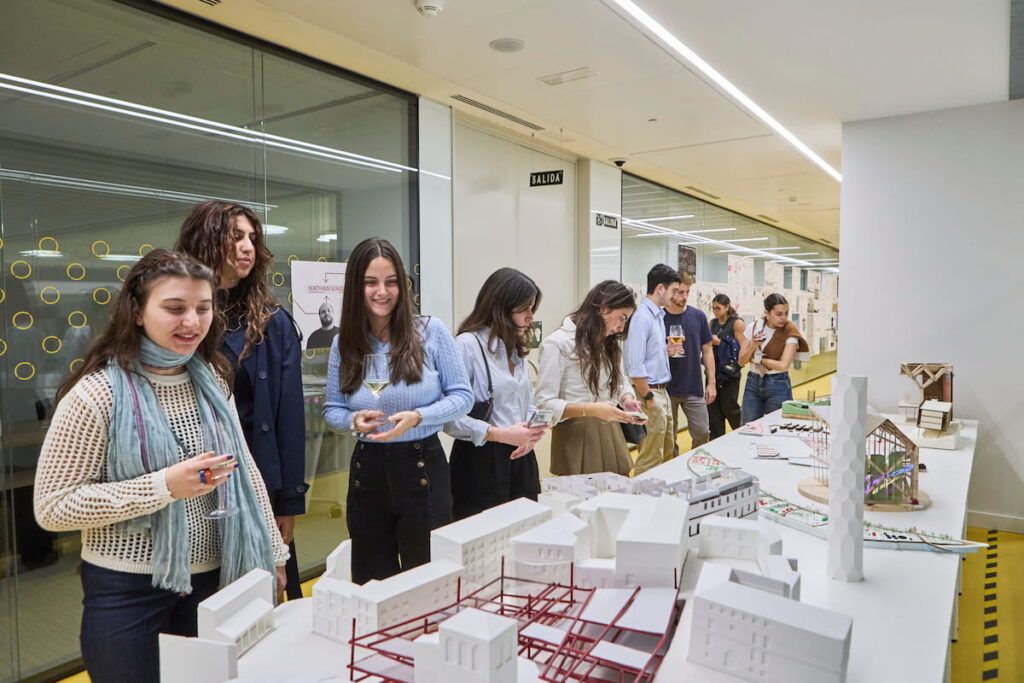Making buildings is the sum of many creative touches. And, long before any brick is laid, architecture design helps us imagine physical spaces as functional structures. From the arrangement of space and geometry to the selection of materials and design details, it’s a unique craft that blends art, science and engineering.
Let’s take a moment to explore the discipline and its role in shaping cities and cultures.
What is the role of architectural design?
There is a difference between an architect and an architectural designer. In short, an architect has completed all the necessary studies for a fully licensed practice. Architectural designers may well have undergraduate and master’s degrees, but haven’t completed formal education. This may be due to age, or simply because they’ve chosen to focus on working in the creative field.
Architectural design serves to ensure the planning phase flowers functional and visually appealing spaces. It also ensures designs are cost-effective and meet safety standards. This means balancing aesthetics with the input of clients, project managers, engineers and construction teams.
But what does an architectural designer do?

Architectural designers take charge of a range of tasks. This includes gathering project specifications, creating design plans, estimating costs and adjusting plans based on feedback. Architectural designers also check that work complies with building codes and safety regulations. Their role may overlap with that of architects, though architectural designers typically handle smaller or less complex projects and don’t require a formal license.
What skills are needed to work in architecture design?
Architectural designers need a combination of technical and interpersonal skills. Strong math and design capabilities are a must. And the modern professional should also have computer literacy and commercial knowledge—which is essential when working withing budgetary limits.
Designers are now expected to work with digital tools like AutoCAD and Autodesk Revit to best present their ideas. They’re also expected to engage in continuous learning of new regulations and design trends.
As we’ve mentioned, you don’t need to be licensed to work as an architectural designer. But you’re unlikely to be hired without some form of education.

Beyond an understanding of theory, practical know-how is critical in developing skills for architecture design. With ongoing learning, architectural designers can deepen specialized knowledge in residential, commercial or heritage restoration projects.
How to design architecture professionally
To work professionally in architectural design, most people begin with a Bachelor of Architecture. This covers essential topics like design, construction methods, environmental systems and digital drafting tools. Many extend their studies with a Master in Architecture to specialize or switch into the field from another background.
Gaining practical experience is achievable through internships or on-site construction work. Internships often last a year, allowing aspiring professionals to apply knowledge in real-world settings under mentorship. For those looking to work beyond architecture design, architectural registration is achievable through a final exam or advanced diploma. In the UK, for example, this would take the form of a Part 3 and taking the RIBA-governed Professional Practice course.
Once qualified and experienced, designers may work for architecture firms, construction companies, government agencies or run their own design practice.

While architectural designers can specialize in areas like commercial, green or landscape architecture, they can also specialize in technical or planning roles. Over time, building a strong portfolio will open more and more doors.
Discover our Master in Architecture in Madrid
Are you interested in a career in architectural design? Consider our Master in Architecture. Delivered in Madrid, the program meets all the rigorous standards required for professional licensure in Spain and across the European Union. It also equips students with international experience and entrepreneurial skills, both of which are core to IE School of Architecture & Design’s identity.
The program offers a unique blend of technical training and real-world immersion. Students participate in studio-based learning, digital fabrication workshops and field experiences like the Amsterdam Lab Immersion, where they work in a leading international architecture firm. Through this hands-on approach, students integrate sustainability, advanced technology and regulatory knowledge into their toolbox. And, throughout, you’ll have personallized feedback from top-tier faculty and industry experts.
Ready to become an expert in business strategy, project management and networking?

Follow the link below to find out how you can work as a professional architect and designer through accreditation pathways like the NAAB International Certification. It’s time to define your craft with a focus on the future.
Become an expert in architectural design
See how the Master in Architecture can enhance your craft and career.

Benjamin is the editor of Uncover IE. His writing is featured in the LAMDA Verse and Prose Anthology Vol. 19, The Primer and Moonflake Press. Benjamin provided translation for “FalseStuff: La Muerte de las Musas”, winner of Best Theatre Show at the Max Awards 2024.
Benjamin was shortlisted for the Bristol Old Vic Open Sessions 2016 and the Alpine Fellowship Writing Prize 2023.






